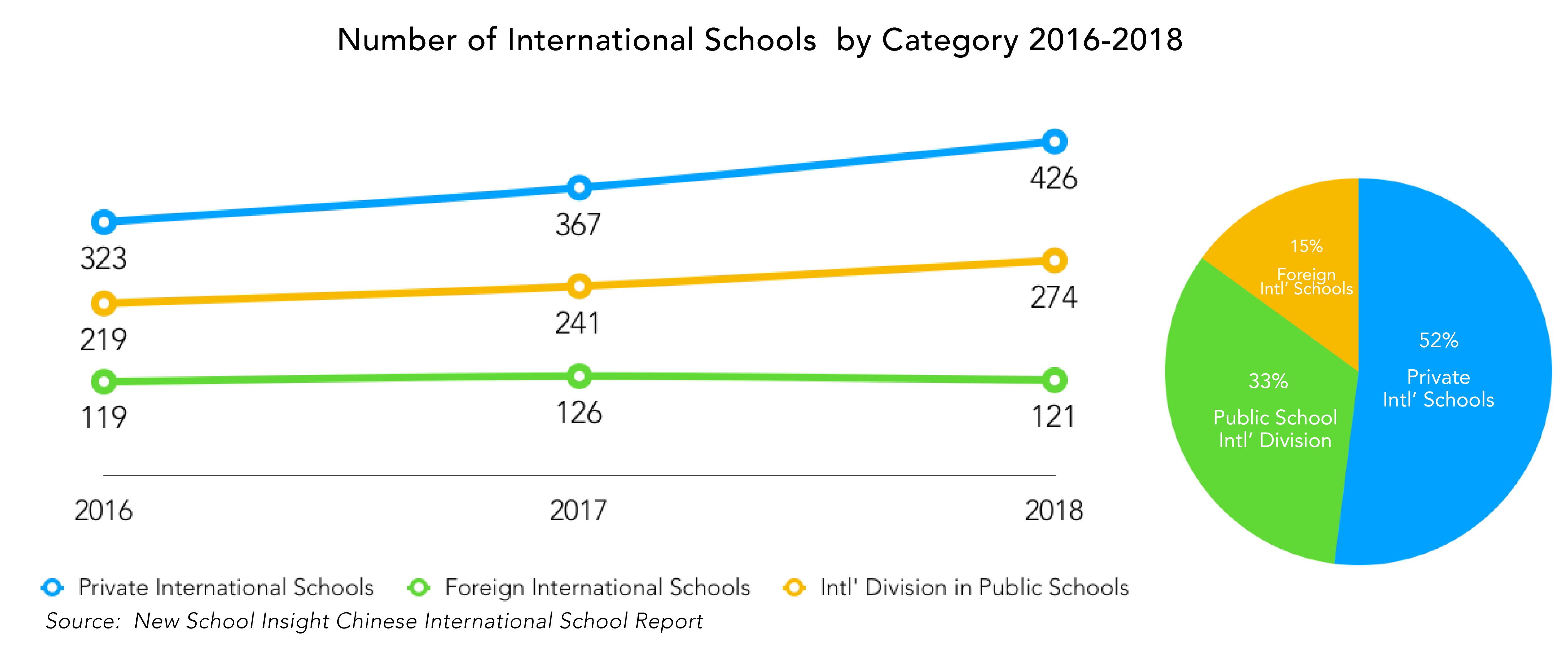TYPES OF INTERNATIONAL SCHOOLS IN CHINA
International Schools in China fall broadly into three categories:
International School for Foreign Nationals (Foreign International Schools)
Foreign International Schools have been around since the 90s with the influx of foreign-owned enterprises in China. They were created to mainly provide education to children of ambassadors and expatriates from Hong Kong, Macau, Taiwan and foreign countries. They may only legally recruit students holding foreign passports, or in some cases, permanent residency cards in foreign countries.

International Division in Public Schools
International division or department in Chinese public schools are usually cooperative educational projects born of Chinese-foreign collaboration. Both Chinese and foreign students can attend, although due to limited space, Chinese students are admitted based on merits and qualifications. This option is mainly for high school as they prepare students to apply universities abroad.
Examples include: Shanghai High School International Division, High School Affiliated to Renmin University of China Joint Program, and Beijing No.4 High School International Class
Private International Schools
Private-funded international schools are independently or jointly established by non-governmental organizations or individuals. They are defined as K-12 schools that exclusively recruit Chinese students who plan to attend high school or college abroad, and it’s necessary for these schools to get relevant documents before they can be open to foreign students.

Private international schools adopt Western pedagogy and in many cases, the syllabus, but their curriculum during the compulsory education (G1-9) needs to be tailored to conform with national standards. Many of these private international schools are named “bilingual school” in Chinese, literally meaning instruction time is split between Chinese and English for different subjects. The percentile might differ in different schools and school levels, but English instruction grows to over 90% in all high schools unanimously so that students get fully prepared for college overseas.
This third type of international schools has seen the most growth in the past few years. By 2018, its number had reached over 50% of the industry total, and had contributed the most to the supply shortage of qualified international teachers in China. There is an average of 37 international teachers per school, and the total number of private international schools had reached over 400 by 2018.

One of the main reasons for the rapid growth of private international schools is the increasing need to study abroad before and/or in college. In the U.S. only, by mid 2017, there were a total of 37,000 K12 Chinese students with a year-over-year growth rate of 40% (compared to a 9% and a 2% growth rate for Chinese undergraduates and postgraduates in the U.S.) With its western style curriculum and pedagogy, a private international school provides a smoother transition to study abroad than a traditional public school, and satisfies more effectively the requirements to apply for schools and colleges abroad.
More importantly, there is a pressing need to upgrade the school systems in China, and private international schools are at the forefront of changes. With China’s rapid economic growth, Chinese parents are spending more money on their children’s education, and they have become more and more appreciative to an effective integration of Chinese and Western educational philosophies. Instead of cramming for knowledge and learning for learning’s sake, they now would like their children to nurture qualities such as creative thinking and problem-solving skills that are needed to adapt to the constantly evolving world. Not being able to send their children to foreign international schools, private international schools became their best alternative to sending their children abroad at an early age.
References:
New School Insight International School Report 2018
A New Era of Education - China Education Development Report 2018, Deloitte China

